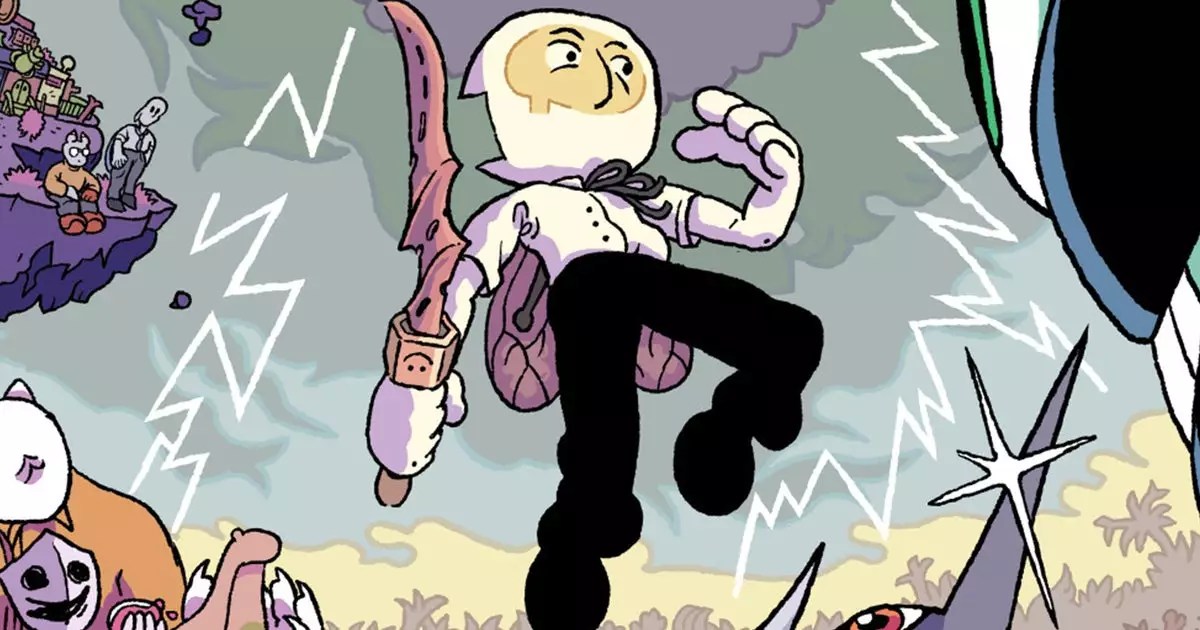In today’s gaming landscape, genre boundaries tend to be rigidly maintained, often leading to predictable experiences. However, some titles challenge this norm, daring to blend disparate elements into something fresh and compelling. Blanksword exemplifies this audacity by uniting the roguelike and RPG genres—a combination that, on paper, seems counterintuitive but demonstrates remarkable synergy in practice. Unlike many indie projects that lean heavily on one aspect or the other, Blanksword manages to harness the strengths of both, creating an experience that invites curiosity and promises depth.
This game’s premise is already compelling: you play as Blank, an angel whose mind has been wiped out after a savage stabbing to the head. The narrative is steeped in mystery, as Blank wanders through a series of islands ruled by a divine entity claiming to be “Literally God.” The story’s surreal tone invites players into a universe where the limits of memory, divinity, and identity are challenged—and where the player’s choices and discoveries shape the unfolding journey. Such storytelling perspective signifies a refreshing departure from typical RPG narratives, leaning into absurdity and existential inquiry, charged with a unique artistic style.
Art, Influence, and Creative Collaborations
Visually, Blanksword immediately sets itself apart with a distinctive aesthetic that echoes the “indie outsider” charm found in titles like Hylics and OFF. Notably, the game’s visual design benefits strongly from involvement by Mortis Ghost, the creator of OFF, which signals a commitment to creating an art style that is both captivating and evocative. The collaboration with Quinn K., the former translator of OFF, further enriches the game’s cultural tapestry, suggesting a deep appreciation for unconventional, art-focused game design.
This synergy extends beyond aesthetics; it underpins the core creative ethos of Blanksword. The game appears to cultivate a sense of playful unpredictability, just as OFF did with its cryptic narrative and surreal visuals. With the involvement of such notable figures, Blanksword positions itself not merely as a game but as a piece of artwork that challenges conventional expectations and invites players into a fantastical, strange universe.
Innovative Gameplay Mechanics and Narrative Depth
One of the most impressive facets of Blanksword is its approach to gameplay mechanics. The game adopts a turn-based combat system reminiscent of traditional RPGs, yet the inclusion of a rogue’s randomness injects a high level of unpredictability. Players acquire a multitude of moves—”hundreds,” they say—each varying with every run, ensuring no two playthroughs are alike. Coupled with a plethora of equipment and items, these mechanics emphasize experimentation, improvisation, and strategic adaptation.
What truly elevates the experience is the game’s narrative flexibility. As Blank has a destroyed brain, the player can restore abilities by collecting Angelic Brain Parts—each granting unique powers. This mechanic cleverly symbolizes the fragments of identity and memory, emphasizing personalization and strategic choice. The options—ranging from intimidation tactics and sensory perception to complex reasoning—allow for a highly customized gameplay style, fostering engagement through a sense of growth and discovery.
Moreover, balancing the use of these brain parts adds a layer of tactical decision-making. Limited slots force players to choose which abilities to activate at crucial moments, reinforcing the roguelike emphasis on resource management and adaptability. The narrative depth, intertwined with these mechanics, offers a layered experience that is as much about storytelling as it is about strategic combat.
Potential and Challenges Ahead
While Blanksword appears promising—a potential cult classic in disguise—its ultimate success hinges on execution and community reception. The availability of a playable demo on Steam is a welcome gesture, allowing early adopters to experience the game’s unique blending firsthand. The demo reveals a surprisingly harmonious integration of roguelike unpredictability and RPG progression, suggesting the creators have a clear vision for how these genres can coexist.
However, many indie projects face hurdles in translating their ambitious ideas into a polished product. The game’s tentative release window in 2027 indicates that the developers are taking their time, likely striving for a high-quality experience that lives up to its intriguing premise. The campaign’s success on Kickstarter will be pivotal, not just for funding but also for building a dedicated audience that appreciates its artistic and gameplay innovations.
Blanksword’s niche appeal—positioned among fans of titles like OFF and Hylics—may foster a dedicated community but also risks remaining obscure in the broader gaming scene. Its success will depend on how well it balances artistic integrity, gameplay depth, and polish, ultimately determining whether it becomes a beloved underground gem or struggles to find its footing.
### Final thoughts:
Blanksword dares to reinvent the indie RPG by boldly weaving together genres that rarely intersect. With its compelling narrative, distinctive art style, and innovative mechanics, it has the potential to captivate a niche audience hungry for originality. Whether it becomes a widely recognized classic or a hidden treasure, what remains clear is its fearless approach to redefining what indie games can achieve.


Leave a Reply